How to turn off the dishwasher
 There is usually no problem turning the dishwasher on and off. However, sometimes there are cases when it is necessary to forcibly turn off the dishwasher, for example, if a housewife forgot to load some dishes, or she urgently needs to leave the house, but does not want to leave the household appliances on. The need to shutdown is often associated with a malfunction, but this does not in any way affect the emergency shutdown process. We'll tell you how to do it correctly.
There is usually no problem turning the dishwasher on and off. However, sometimes there are cases when it is necessary to forcibly turn off the dishwasher, for example, if a housewife forgot to load some dishes, or she urgently needs to leave the house, but does not want to leave the household appliances on. The need to shutdown is often associated with a malfunction, but this does not in any way affect the emergency shutdown process. We'll tell you how to do it correctly.
Emergency shutdown of the dishwasher
You can stop the working cycle with any PMM, regardless of the brand and model, but the process will be different. Because of this, it is best to read the instructions first and only then proceed. But if you don’t have time to read the reference book, or the document itself is not at hand at the moment, then you can use our short guide. What is needed to turn off the dishwasher while it is running?
- In a situation where you urgently need to add dishes, or remove something from a washing chamber that is already actively washing, you can either pause the “home assistant” or simply open the door, which is important for some models. When you have completed the necessary manipulations, simply close the door so that the program continues again.
Do not lean too low on the door when opening it, as you may be exposed to hot steam and cause serious burns.
- To turn off the PMM after completing the operating cycle, you need to press the power button and open the door, not forgetting the standard precautions.
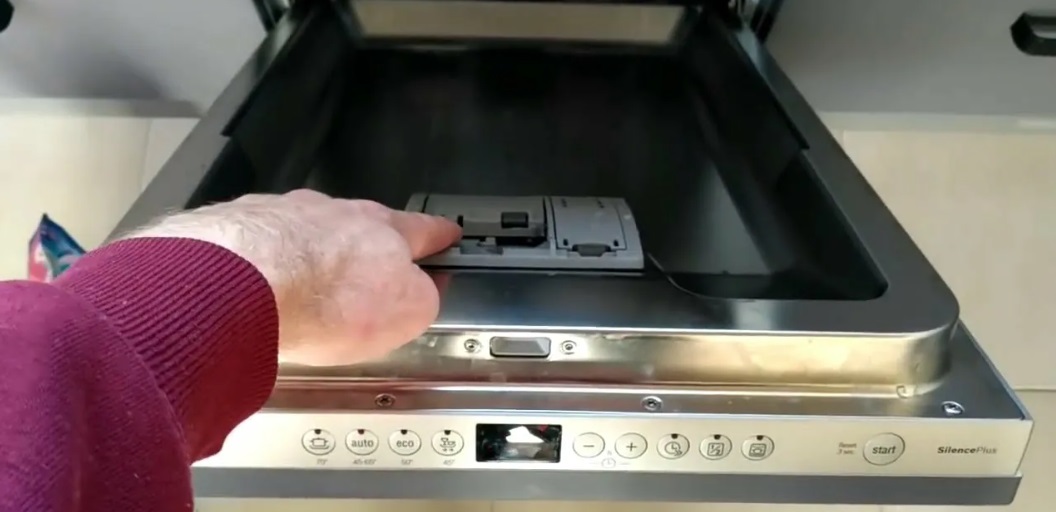
- To interrupt the current wash, press the power button and wait until the program indicator goes out. Then you need to press the button again so that the indicator lights up again and the selected work cycle ends as quickly as possible. Check your owner's manual to make sure your dishwasher has this feature.
Do not overuse the described actions, because if you often open the door after the start of washing, air will enter and heat up inside the washing chamber, which, due to heating, will begin to expand and displace water into the emergency pan. This can lead to leakage protection, so it is better to open the PMM door as little as possible.
Why completely disable PMM?
In rare cases, it is necessary to completely turn off the dishwasher, for example, if the machine is installed in a country house that needs to be prepared for winter and turn off all household appliances that are installed in unheated rooms. This is not difficult to do, especially if you have previously installed the device yourself. It is very important to drain all remaining water from the equipment before turning it off.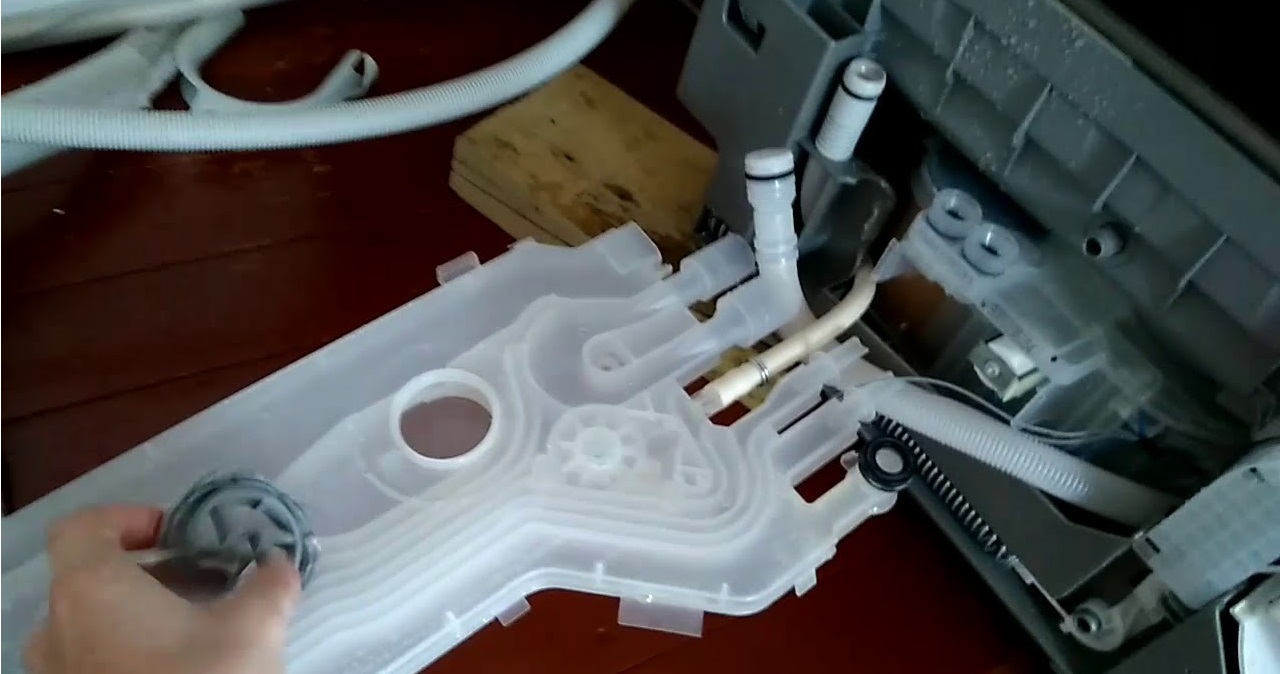
This is necessary because if you do not get rid of the waste fluid, it can cause rust over the winter. That’s why it’s so important to drain all the water before turning it off, plus remove any dishes that might have been stored there from the washing chamber. This is especially true when moving, since during transportation the dishes can break and damage the internal components of the PMM. Also, the machine should be turned off due to the need for repair or replacement of the device.
Removing the dishwasher
Whatever the situation, a complete shutdown will be no different.Prepare screwdrivers and keys, and also examine the device’s fasteners to ensure you have all the appropriate tools. If everything is ready, then you can begin dismantling.
- Unplug the machine.
- Close the shut-off valve of the device.
- Carefully remove the bolts securing the bottom panel of the PMM.
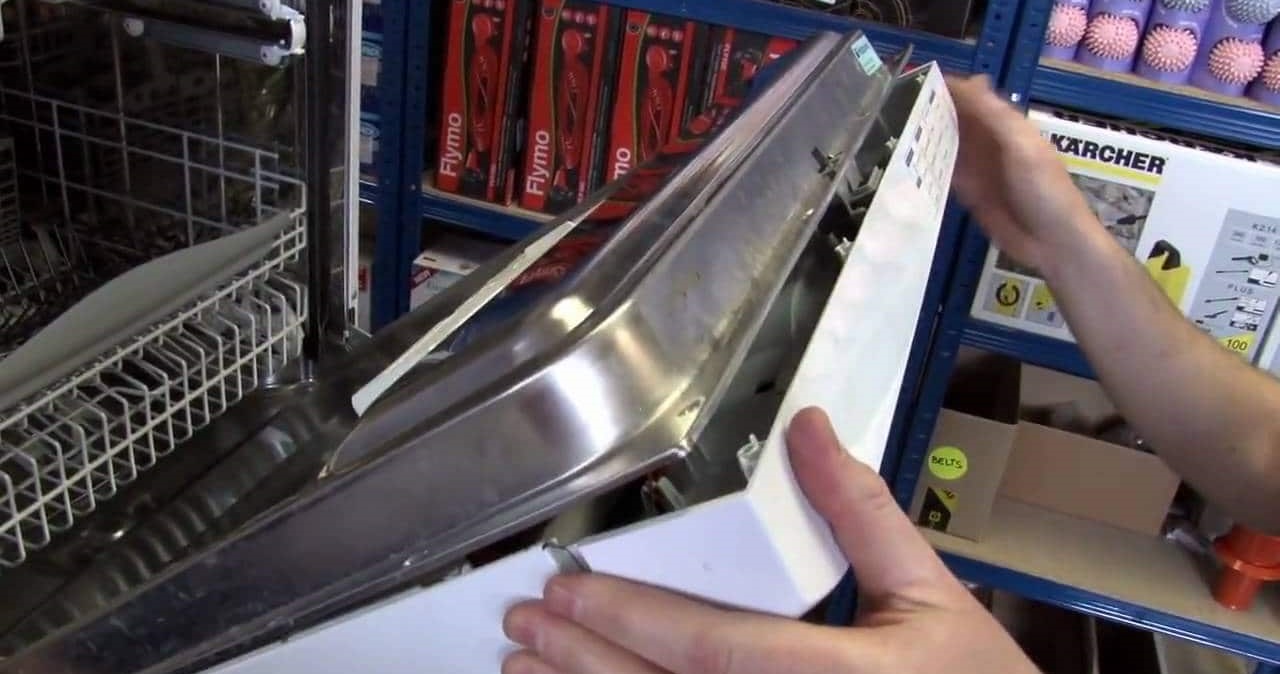
- Remove the inlet hose, remembering to first unscrew the retaining nut.
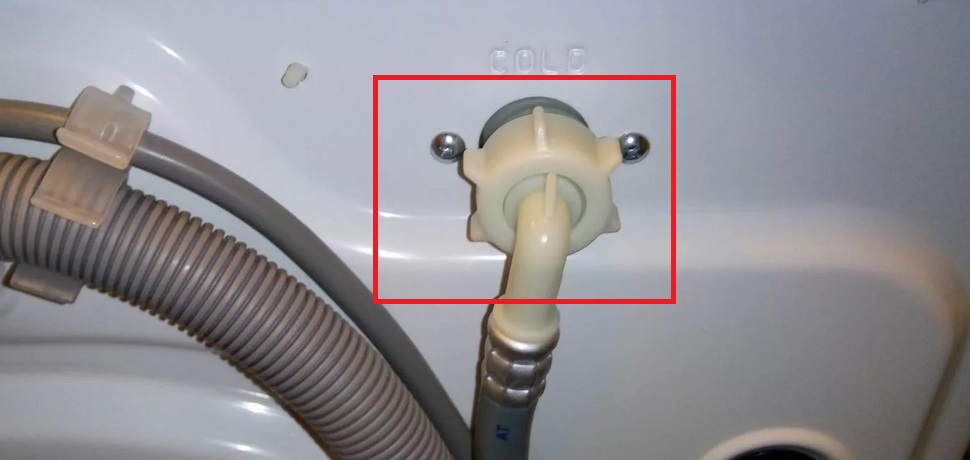
- Prepare a basin or other convenient container so that you have somewhere to drain the remaining water.
- Remove the fasteners from the junction box - this will give you free access to the cover.
It is better to take several photographs of the wire connections so that during reassembly you will have a clear example of the correct wiring.
- Disconnect the wiring.
- Remove the fasteners, as well as the bolt from the bracket, which will allow you to remove the cable.
- Loosen the seal with a small screwdriver to remove the cable.
- Locate the drain, which is usually under the sink.
- Loosen the clamps on the drain hose, remove it and pull it out through the kitchen unit.

- Open the washer door to remove the "home assistant" fasteners to the kitchen cabinet.
- Release the legs of the machine - they may have been secured with screws for balance.
- Carefully remove the dishwasher by pulling it towards you.
If you have a fully built-in appliance with a hinged facade installed, then you also need to remove the door, after first removing the screws located around the perimeter of the door on the side of the hopper. All the described procedures can be easily done with your own hands, strictly following our instructions, so it is not necessary to call a service center specialist.
Remember safety
During any repair work, you should remember safety precautions.The standard list of such measures is, in general, familiar to everyone, but it would not be superfluous to repeat it, especially since the theses are very important.
- Always disconnect the equipment from the electrical outlet if the equipment needs to be repaired or completely dismantled.
- Be sure to turn off the water supply before disconnecting the dishwasher hoses to avoid flooding your floors and neighbors below.
- Do not turn off the PMM until you are sure that there is no waste water in it. To get rid of the liquid, turn on the drain and lower the hose into a small bucket or basin to allow the water to drain into it.
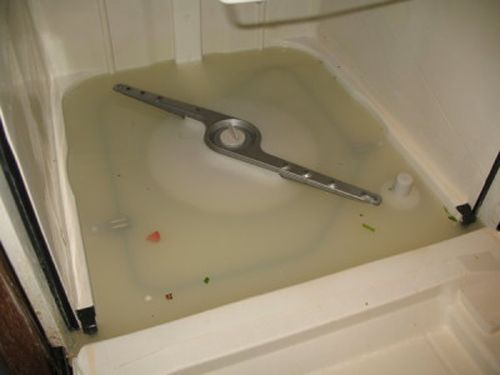
- In certain situations, to seal the hole that is needed for water to enter the unit through it, you need to buy special steel elements to close the pipes.
- The tightness of the hole must be ensured even if the water supply is turned off.
Always draw up the scope of work in advance so that you have a good idea of all the stages of dismantling, in what order what to do, and what needs to be prepared for this.
Problems that require removing the machine
Most often, disabling the “home assistant” is required due to various breakdowns that require user intervention. Here are the most common problems due to which you need to disable the PMM.
- During the operating cycle, a lot of water remains inside the equipment. Be careful not to spill any liquid on the floor while disconnecting the hoses.
- The dishes are not completely washed. If dirt remains on the tableware, then the problem may be hidden in a blockage, to combat which you need to turn off the equipment and carefully inspect it.
- Electricity consumption has increased.If you notice that your utility bills have increased, then the water heating element may be to blame, which needs to be checked visually and with a multimeter.
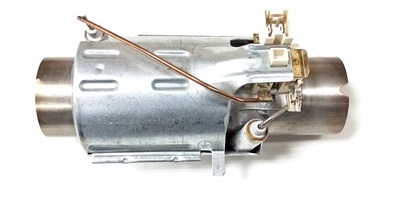
- The water is constantly overflowing. The fault may be hidden in the water level sensor, also known as a pressure switch. If it is broken, it will need to be replaced.
- The dishwasher stopped turning on. Most often this happens due to a faulty surge protector or power button.
- Water forms under the machine. This is usually due to damaged hoses or a malfunction of the water collection hopper.
Any situation described is a reason to completely turn off the equipment and further check it at home. Carefully study the indicated reasons, and if it is impossible to repair it yourself, call a specialist.
Interesting:
Reader comments
- Share your opinion - leave a comment





















Add a comment